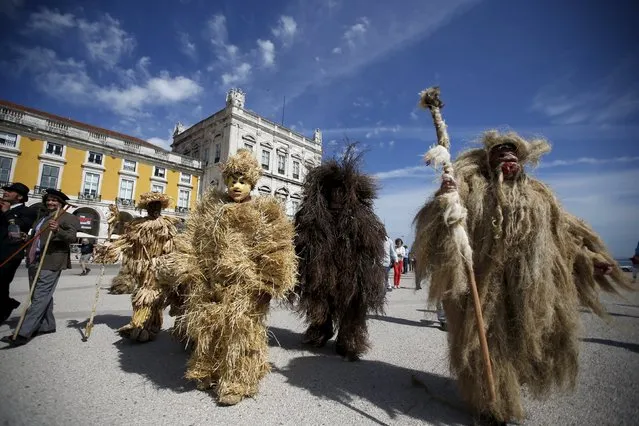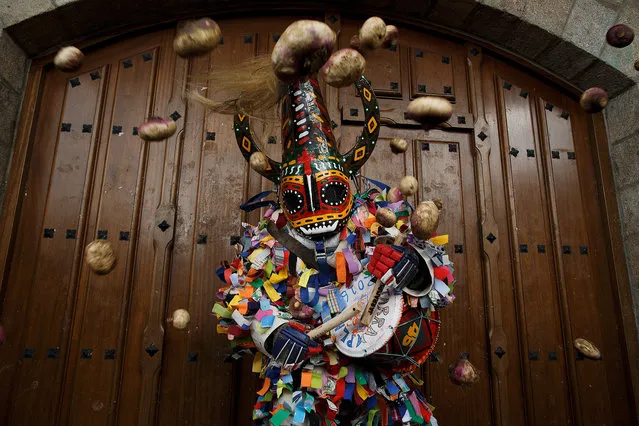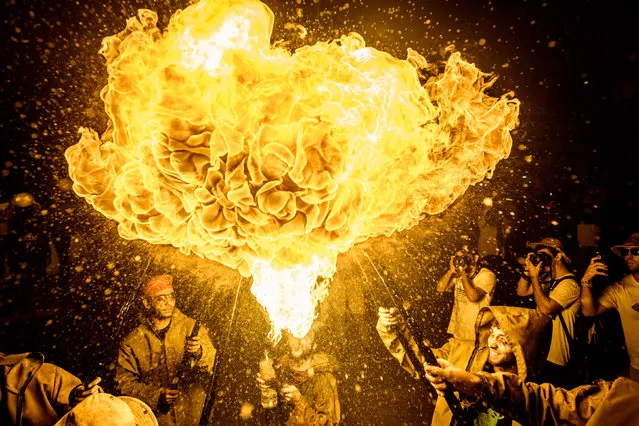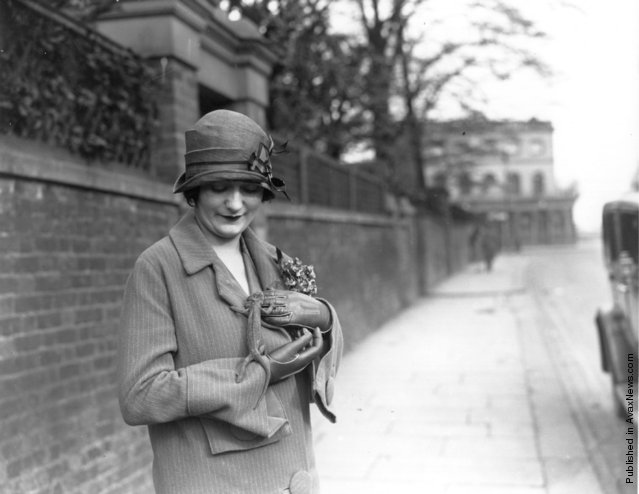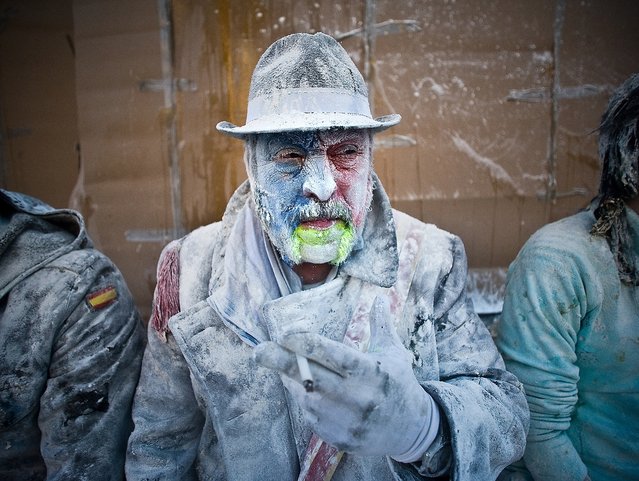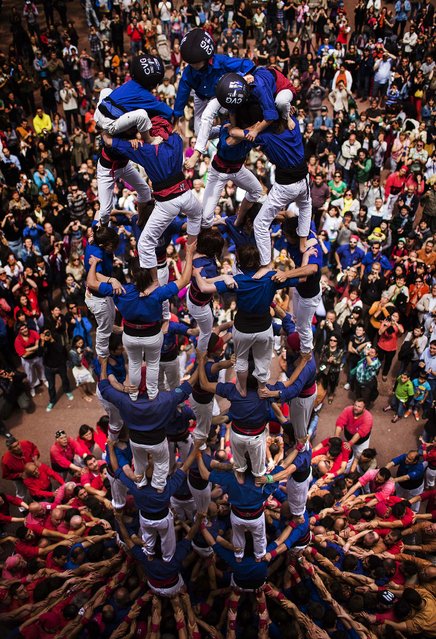
Members of the Castellers “Vila de Gracia” start forming their famous human tower called “castell” in the Barcelona neighborhood of Gracia, Catalonia, Spain on Sunday May 19 2013. A “castell” is a human tower traditionally built during festivals in many places in Catalonia. At these festivals, several "colles" or teams compete to build the most impressive towers they can. (Photo by Emilio Morenatti/Associated Press)
22 May 2013 12:37:00,post received
0 comments

